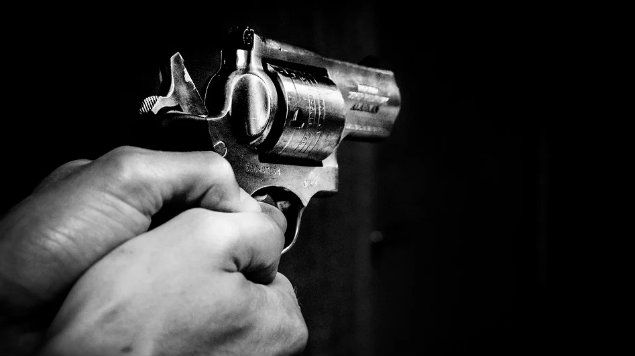Colima: the paradise that became hell because of organized crime
For the past three years, the state has topped the list as the state with the highest number of intentional homicides.

In just a few years, the state of Colima, located in western Mexico, went from being the safest state in the country to first place in intentional homicides. This situation caused it to recently appear on the U.S. government's travel alerts, placing it at level 4 for maximum violence, similar to Syria. Since 2010, Colima, an entity that borders the states of Jalisco, Michoacan, and the Pacific Ocean, began to suffer an upsurge in violence, mainly generated by organized crime.
According to state authorities, the emergence of self-defense in Michoacan to combat the Knights Templar caused the criminal organization to mobilize to Colima, which brought to these lands an upsurge in violence. Between 2000 and 2009, an average of 50 murders per year was perpetrated in the state, but from 2010, at the beginning of the administration of former PRI governor Mario Anguiano (2009-2015), things changed.
His government was under suspicion of having links to drug trafficking. Despite the fact that before taking office, Anguiano Moreno failed a questionnaire (accompanied by a lie detector) in which he was asked questions about whether he had any kind of relationship with drug traffickers, he took office. It was during his six-year term that the violence in Colima broke out. In addition, at the end of his government, Anguiano Moreno was accused of diverting more than 2,000 million pesos from the public purse. Shortly thereafter he was fined 45 million pesos and disqualified for 23 years from public office.
The descent into hell
In 2010, former Governor Silverio Cavazos Ceballos was assassinated while walking his dog outside his home in the Jardines de Vistahermosa neighborhood. According to data from the U.S. Department of Public Safety, 93 intentional homicides were committed that year; in 2011, 165; in 2012, 287. Although in 2013 and 2014 there was a drop in the number of murders, in 2015 a new upturn began.
The authorities attributed the increase in homicides to the confrontation between the Sinaloa Cartels (CDS), the New Generation Jalisco Cartel (CJNG), and what remains of the Knights Templar and the Michoacán Family. At the beginning of 2016, under the government of the current governor, also PRI member José Ignacio Peralta, a Facebook profile entitled "Sinaloa is already in Colima" was released, warning of the presence of the criminal group, now headed by Ismael "El Mayo" Zambada, and threatening that "the sweeper" had arrived against the New Generation Jalisco Cartel.
The violence spread throughout the entity, not only leaving rivers of blood of hired killers from one side or the other, but also taking the lives of businessmen, students, and even children. The cartels turned Manzanillo, Tecomán, Armería, and Ixtlahuacán into the most violent municipalities in the state. Manzanillo, in addition to being one of the most popular tourist destinations, is one of the most important ports in the country. Not only do goods from various parts of the world enter and leave the port, it is also a strategic point on the route used by criminal groups for the transfer of drugs and money.
That city accumulates almost half of the intentional homicides that occur in the entity (44%), ranking as the bloodiest in the entity. In addition to shootings in its streets, there have also been registered attacks to rehabilitation centers, which have been found several houses where criminals dismembered people and dozens of clandestine graves. In the municipality of Tecomán, narcotics have also been found with dozens of bodies.
At the beginning of February of this year, Manzanillo was considered among the 17 regions of priority attention by the Secretariat of Security and Citizen Protection, and since March it has received 600 additional federal elements to strengthen security. The spiral of violence that has shaken the entity since 2015 has led Colima to be the entity with the most intentional homicides in the country for three consecutive years. According to the latest population census of the National Institute of Statistics and Geography (INEGI), Colima has a population of 711,235, which causes the impact of these murders to increase.
In 2017, the state reached its most violent year, reaching a rate of 93.61 murders per 100,000 inhabitants. In 2018 the rate reached 81.09 malicious homicides, according to figures from the Executive Secretariat of the National Public Security System (SNSP). According to this measurement, based on data reported by the country's prosecutors, last year Colima surpassed the national average of 23.10 murders per 100,000 inhabitants by more than three times.
During the first 10 months of 2019, the state has registered 541 murders, representing a rate of 70 murders per 100,000 inhabitants, according to official figures. These numbers are almost four times higher than the national average of 19 homicides per 100,000 inhabitants, according to data from the Executive Secretariat of the National Public Security System.
Violence Reaches Mayors and Former Governors
Attacks on political actors in the state have been constant. In 2010, former governor Silverio Cavazos was assassinated. He was killed outside his home in the state capital. Five years later, in 2015, former governor Fernando Moreno Peña was the victim of an assassination attempt at a meeting at a local restaurant. The politician survived the attack.
But not only local politicians have been victims of organized crime. In the state, there have also been murders of mayors from other states. In October 2017, three mayors were murdered on colimense soil: Crispín Gutiérrez, from the municipality of Ixtlahuacán (Colima), Manuel Hernández Pasión, who was mayor of Huitzilán de Serdán (Puebla) and Stalin Sánchez González, mayor of Paracho (Michoacán).
This August 2019, the former mayor of Aquila, Michoacán, Mario Álvarez López, was shot dead in the city of Colima. But before that, on July 26th of this year, the mayor of Manzanillo, Colima, Griselda Martínez Martínez, was the victim of a gunshot attack. The official was unharmed, but one of her escorts died at the site of the attack, on one of the main roads of the tourist city.
After the attack, the mayor receives protection from the Secretary of the Navy and even lives in a military housing unit. The fact was confirmed by the secretary himself, Admiral José Rafael Ojeda. "In this case, the municipal president of Manzanillo, who had an attack, we are giving the support, is living in the Navy facilities, and as long as she considers and as long as necessary we will continue to give the support," said the head of Semar.
Her management has been controversial by expressing on several occasions that she does not know the public service and therefore had no desire to be mayor and much less to run in the future as a candidate for governor of Colima. On April 3, she made it clear to the local press that she was not part of the party that nominated her, arguing that although she was Morena's candidate, she is not a member of that political organization.




